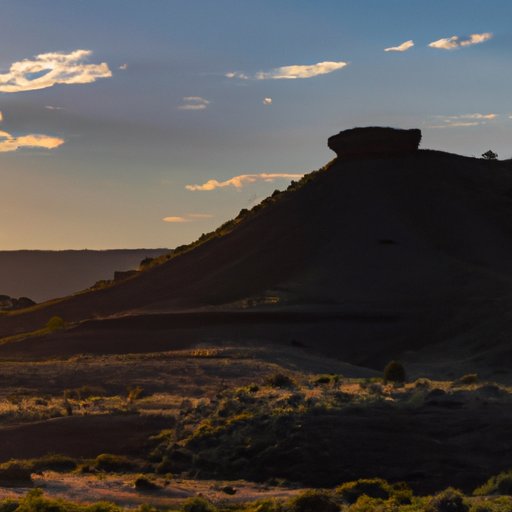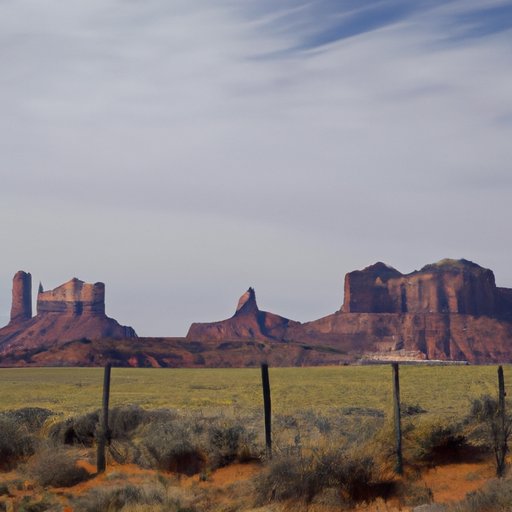Exploring the Mystique and Significance of Buttes in the American Landscape
Buttes are a common sight in the American landscape, rising high above the surrounding terrain and commanding attention with their imposing presence. These unique geological formations have captured the imagination and awe of people for centuries, inspiring myths, legends, and artwork. But what exactly is a butte, and why are they important?
Rising from the Plains: Understanding the Geology of Buttes
Buttes are geological formations that typically have steep, vertical sides and a flat top. They are formed over thousands of years through a combination of plate tectonics, erosion, and weathering. Plate tectonics cause the ground to uplift, creating a raised area that is then exposed to the elements. Over time, water and wind wear away the softer layers of rock, leaving behind a more resistant layer to form the butte.
Buttes are commonly composed of sedimentary rock layers, which were formed in ancient seas and lake beds. The rock layers can tell the story of the area’s geological history, including information about the climate, environment, and even prehistoric life forms.
The Beauty and Significance of Buttes in the American Landscape
Some of the most well-known buttes in the American landscape include Monument Valley and the Devils Tower in Wyoming. Buttes can take on various shapes and sizes, from towering spires to broad mesa-like formations. They often provide a striking contrast to the surrounding landscape, standing out as natural landmarks or points of interest for visitors.
Buttes also contribute to the diversity and beauty of the American landscape, adding unique and interesting features that complement other landforms like canyons, mountains, and rivers. Buttes are also significant cultural and historical landmarks for Indigenous peoples who have long inhabited the areas where these formations can be found.
From Erosion to Icon: A Deep Dive into the Formation of Buttes
The formation of buttes is a complex and ongoing process that can take thousands or even millions of years to complete. Water and wind are the primary factors in erosion, with wind being particularly important in shaping the distinctive vertical sides of buttes. As the wind blows across the softer rock layers, it gradually wears them away, leaving behind the harder, resistant layer to form the butte.
Buttes can differ from other similar formations, like mesas or spires, based on their distinct characteristics. Mesas are broader and typically feature a flat top, while spires are narrower and pointed. Buttes can range in size from small hills to towering cliffs, and their shape can depend on the type of rock that makes up their composition.

The Mystique of Buttes: Mythology and Cultural Significance of These Natural Phenomena
Buttes have a long history of cultural and mythological significance throughout the world. For Indigenous peoples, buttes have often been seen as sacred landmarks with deep spiritual and cultural significance. In other cultures, buttes have been interpreted as the dwelling places of gods or other supernatural beings or as gateways to other realms.
Buttes have also been interpreted in contemporary culture as symbols of strength, resilience, and perseverance. In artwork and popular media, buttes are often portrayed as towering symbols of natural beauty and strength, inspiring feelings of awe and respect.
The Formation and Preservation of Buttes: An Environmental Study
Buttes are also significant from an environmental standpoint, as they provide unique habitats for a variety of flora and fauna. As climate change and other environmental factors continue to affect natural landscapes, preserving buttes and their ecosystems becomes increasingly important. Efforts to preserve and protect these natural landmarks include initiatives to reduce pollution and conserve water resources, as well as programs to restore and reintroduce native plant and animal species.
Rediscovering the Lost Art of Butte Building: A Historical and Architectural Analysis
Buttes have also been used historically as architectural features, with many cultures creating structures that mimic the shape and form of natural buttes. These butte buildings can serve a variety of purposes, from defensive structures to religious or ceremonial spaces.
Today, innovative architects and designers are exploring the potential for building new butte-like structures that are environmentally sustainable and can provide unique living and working spaces. These new structures could allow for better integration with the natural environment and provide innovative solutions for modern urban and suburban design.
Conclusion
In conclusion, buttes are remarkable geological formations that provide both natural beauty and significant cultural and environmental value. As we continue to learn more about these unique landforms and their history, we can better appreciate the intricacy and significance of the American landscape and our planet’s geological and ecological history.
